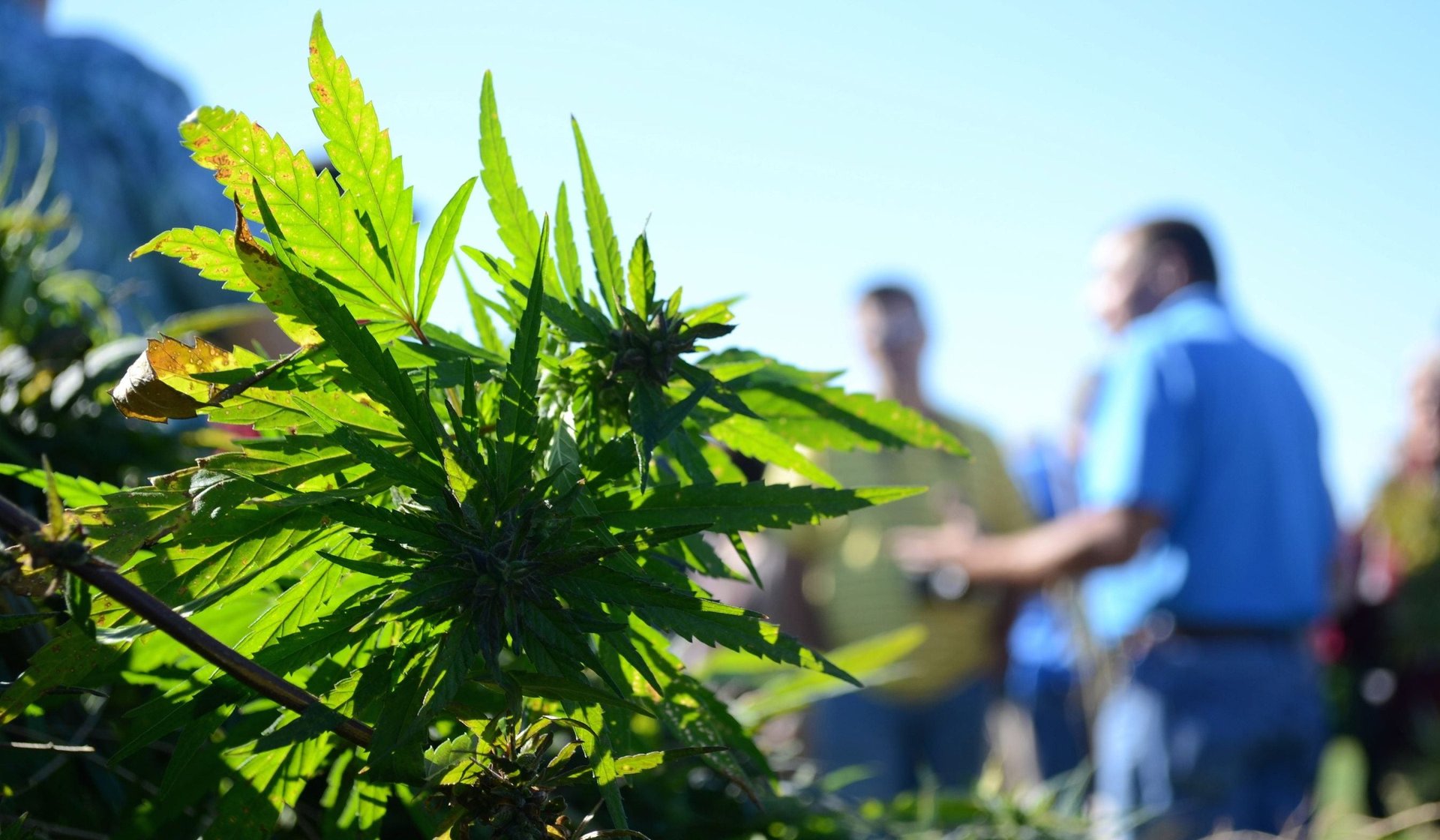Even farmers are shifting from tobacco to hemp and CBD
Will Brownlow, who has been farming in southeast Kentucky for close to three decades, says he first planted 10 acres of hemp in 2016 for the “novelty factor.” This year, he planted 40, and next year he plans to cover 60 to 80 acres (25 to 32 hectares) of the 340 acres he farms in hemp.


Will Brownlow, who has been farming in southeast Kentucky for close to three decades, says he first planted 10 acres of hemp in 2016 for the “novelty factor.” This year, he planted 40, and next year he plans to cover 60 to 80 acres (25 to 32 hectares) of the 340 acres he farms in hemp.
And farmers like Brownlow are likely to continue planting more of it, as US Congress is expected to pass the 2018 Farm Bill with a provision that would define industrial hemp a regular agricultural crop, clarifying the legal status of extracts and allowing hemp growers to buy federally-subsidized crop insurance. Hemp’s inclusion in the Farm Bill was sponsored by the most powerful US senator, Mitch McConnell, the chamber’s majority leader.
The US defines industrial hemp as cannabis sativa plants containing 0.3% or less THC. Essentially, it’s marijuana that won’t get you high.
In 1970, the Controlled Substances Act lumped hemp along with marijuana as a Schedule I substance, with “no currently accepted medical use and a high potential for abuse.” The crop was illegal for anyone without a permit to grow until the 2014 Farm Bill opened up industrial hemp cultivation to state-controlled pilot programs. Since then, the land area of planted hemp has more than doubled every year, according to data from the US Department of Agriculture.
The consumer craze for cannabidiol, or CBD, has helped drive the demand for hemp. CBD is a chemical compound that occurs naturally in cannabis and appears in everything from muscle rub and sublingual drops to lattes and dog treats.
Brownlow says he’s happy with how his hemp crops have performed—“the plant is a weed, and it likes to grow.” That makes it easier to turn a profit.
“The hope was it would move beyond the novelty stage and actually be worth something,” says Brownlow. “There are a lot of things you can do on a farm, but there aren’t a lot of things you can do to make money.”
A century ago, one of the best things a Kentucky farmer could do to make money was cultivate tobacco. At its height in 1919, over 600,000 acres were harvested across the state. By 2018, that number had decreased by nearly 90 percent. Soybeans are now Kentucky’s leading crop.
Even cigarette makers have taken notice of the shift away from tobacco. Altria, the maker of Marlboro cigarettes, spent $1.8 billion to acquire a 45% stake in Canadian marijuana company Cronos. The deal was announced Dec. 7.
Brownlow’s fields followed the progression of tobacco to soy to hemp. He says an acre of soybeans he could only get him $500 today, but an acre of hemp—dense with flowers rich in CBD—could yield as much as $30,000.
So it stands to reason that McConnell—a republican from Kentucky—sponsored the bill that would remove industrial hemp, and any legal ambiguity surrounding hemp-derived CBD, from the Controlled Substances Act and championed its inclusion in the 2018 Farm Bill.
“I don’t know whether it’s going to be the next tobacco or not,” McConnell said in November, “But I do think [hemp] has a lot of potential.”
It’s worth noting that the states with the most acreage of industrial hemp planted, Montana and Colorado, are not in tobacco country at all.
But Brownlow says fellow former tobacco farmers like him are uniquely positioned to make good on the hemp boom. ”The tobacco farmer would be the perfect person to grow hemp,” he says. “They’re absolutely crazy not to grow it.”
A tobacco setter, he says, is a perfect piece of equipment for planting young hemp plants, and a barn once used for drying tobacco is the optimum for drying hemp.
When asked whether he’d consider planting marijuana, should it become legal in Kentucky, Brownlow paused.
“I haven’t crossed that bridge yet,” he said. “We definitely have the infrastructure.”